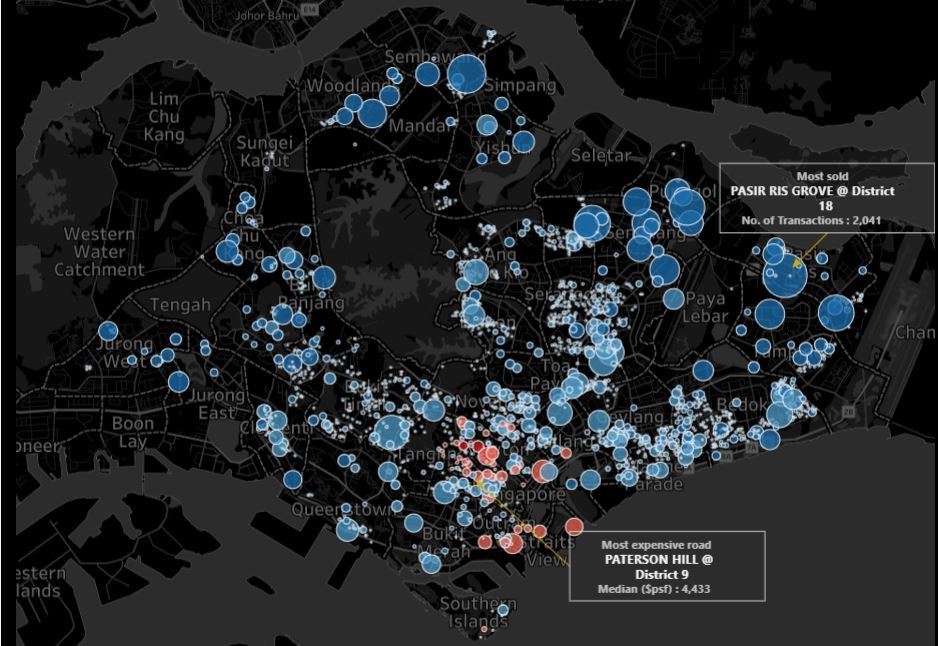Upskilling Asia’s workforce with modern analytics
Editor’s Note: A version of this byline article originally appeared in the digital edition of TODAY News on April 6, 2018, with the headline ‘Data analytics skills key to Singapore’s future-ready workforce’.
McKinsey estimates that by 2020 the world will face a shortage of nearly 40 million highly-skilled workers. By 2030, the Economist also forecasts that East Asia will have to import 275 million people between the ages of 15 and 64 while Southeast Asia will have to attract six million people to keep the share of their working population steady.
Long regarded as one of Asia’s ‘Tiger Economies’, Singapore also faces a shrinking labor force brought on by an aging population. This challenge has taken center stage again in economic discussions as the city-state’s government aims to maintain a robust economy and organizations seek manpower.
In a post-Budget forum this last March, Singapore’s Finance Minister Heng Swee Keat reinforced the need for businesses to increase their digital transformation efforts and productivity to overcome a shrinking labor force. He warned that the challenges and repercussions will only get more critical in the next few years.

(Visitors interacting with data at Singapore’s Changi Airport)
As the nation finds itself in a precarious situation, it has the potential to overcome the challenges and gain a competitive edge by marrying digital technologies and its workforce. By prioritizing data analytic skills among other capabilities, Singapore will attract talent, but also elevate its current workforce to higher levels.
Stakeholder concentration on modern analytics key to economic transformation
Businesses know they need to evolve in the analytics landscape, but the question is how do they easily make that transition and secure the right talent. In fact, Mr. Heng cited data analytics, artificial intelligence, Internet of Things, and cybersecurity - termed ‘frontier’ technologies by the Info-communications Media Development Authority - as skills that the workforce needs training in to make that shift.
As a demonstration of commitment, the Singapore government is taking active steps to upskill the workforce with multiple initiatives, including the expansion of the TechSkills Accelerator (TeSA) programme with an additional 20,000 training places created by 2020 and with courses targeting frontier technologies.
The government has also put in place several measures to encourage citizen exploration of publicly-available datasets and help them create value from data analytics.

(Data viz created with publicly available data on Singapore’s property market)
In “Think with data when speaking with digital government”, Marcus Loh, Tableau’s Director for Asia Pacific Communication said: “As of 2016, over 30,000 government data sets from 70 public agencies were available on Data.gov.sg, one of several open data websites that the Government has launched.”
He adds: “While policymakers have taken steps to deepen public engagement by releasing more data… the onus must also be on Singaporeans to make the effort of understand these data to be able to constructively engage with policymakers as Singapore doubles down on efforts to become more digital and data-guided.”
Visual analytics-as-a-skill: a near-term priority
In the new digital economy, data is the new oil. Insights gleaned from data analytics have immense value and can be a disruptive force, giving different-sized organizations an edge over the competition. But there is realization that upskilling the current workforce must happen fast to reap data’s benefits, and collaboration of different stakeholders is required. The balancing act lies between realizing short term gains and being prepared for the future.
The market for top talent is always tight and people are the most valuable asset. So in that regard, the Singapore Management University (SMU), introduced a Human Resources Analytics course in its Organizational Behavior and Human Resources major.
The course teaches students how to apply analytics in making people decisions, connecting human resource policies and practices with business performance. Fermin Diez, a professor that teaches the course, takes the need for data skills very seriously, saying: “The future of the HR profession lies in analytics. No professional entering the field can expect to succeed in his or her career without a solid understanding and hands-on practice of analytical tools to help in making people decisions.”
One brand’s story of analytics adoption supports 95-percent increase of reporting efficiency
Lenovo, a technology company with over 55,000 employees worldwide and customers in over 160 countries, is an example of a global enterprise that is reaping the benefits of empowering all of its staff to harness modern analytics.

(Tech giant Lenovo gains 95 percent efficiency with Tableau)
With approximately 3,000 active Tableau users in 15 business units and more than 10,000 users accessing Tableau dashboards, Lenovo reported that “real-time decision-making is empowering stakeholders to make business decisions faster,” leading to 95-percent efficiency improvement across 28 countries.
One of these stakeholders is Lenovo’s Human Resources department. Before Tableau, Human Resources generated 100+ reports globally across talent acquisition, compensation, attrition, and headcount management, which created a long reporting cycle and made it difficult for team leaders to make data-driven decisions.
Within three-months time, Lenovo’s Human Resources created a series of dashboards using Tableau with data insights that helped them reach major divisional milestones.
Read about Lenovo’s modern analytics story with Tableau here.
Stories like Lenovo’s validate Professor Diez’s position that it’s time to abandon stereotypes around data-crunching and data skills belonging solely in IT. Different roles across departments will need to work with data, and everyone will need to be armed with the skills to have a deeper understanding of its implications to the business.
To access and learn more about Tableau’s Modern BI solutions continue reading here.
Historias relacionadas
Suscribirse a nuestro blog
Obtenga las últimas actualizaciones de Tableau en su bandeja de entrada.








